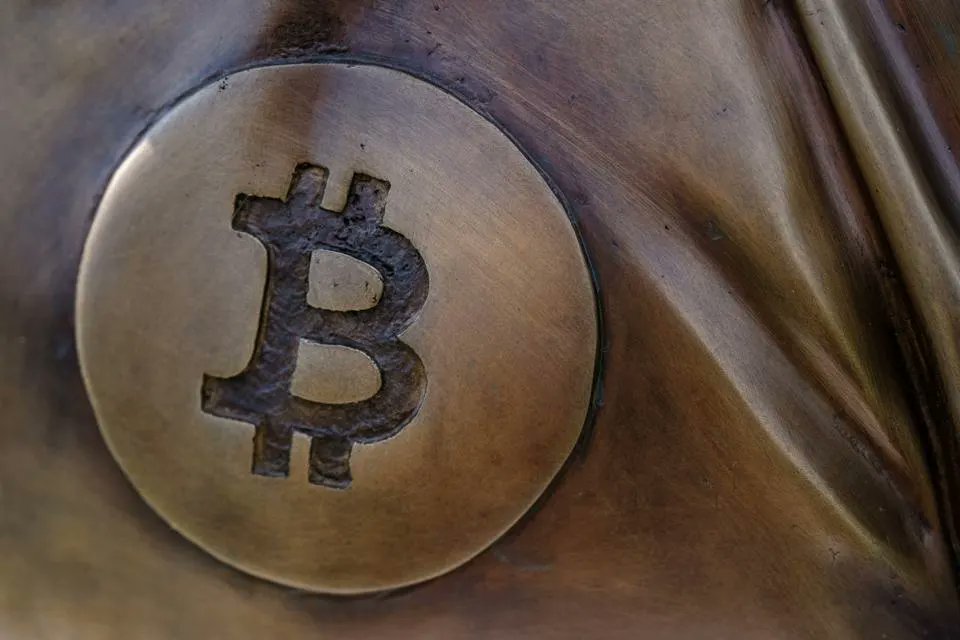1/ Fintech powerhouse Stripe is secretly building a high-performance blockchain called "Tempo," per a now-removed job posting and Fortune’s reporting.

2/ Stablecoins promise to make crypto mainstream by delivering faster, cheaper, more interconnected global payments. The paradox: the same move could undercut what the technology set out to achieve.
3/ Add the rush to branded rails and we could end up close to where we started, just with block explorers. Worse, market concentration may rise if a few players use stablecoins to reach previously unimaginable scale.
4/ Will History Repeat Itself? In the history of technology, the pendulum regularly swings between centralization and decentralization.
5/ Even when a technology has a decentralizing effect, economies of scale in a new dimension—whether complementary resources, talent, brand, or distribution—inevitably become vectors of concentration.
6/ A prominent example is the early internet, which brought a wave of entry and competition to the heavily concentrated industries of telecommunications, retail, and media—only to create the perfect conditions for today’s tech giants to scale through network effects and capture a sizable share of value.
7/ Although the underlying internet protocols remained open and neutral, massive digital platforms at the application layer walled off participants from competing services by strategically breaking interoperability. From email to social media to payments, we spend most of our time and money within the confines of what the tech giants have designed for us. And while we are clearly better off—more choice, lower prices—it’s increasingly clear that some would prefer a world where platforms do not have as much power and influence over them.
8/ Crypto’s reason for existence was to break free from centralized intermediaries. After the 2008 financial crisis, Satoshi wanted to create a world where anyone could exchange value without having to trust a central bank or financial institution ever again.

9/ In payments, the most critical battle is unfolding now. Legacy infrastructure is siloed, and incumbents have tremendous power over what we can access—and on what terms. Because of winner‑take‑all dynamics, markets can become so concentrated that the public sector has to step in—the most salient example is China’s introduction of a central bank digital currency to unravel the payments oligopoly established by Ant Group and Tencent.
10/ Crypto is a natural, market-driven solution to this. It provides neutral and decentralized cryptocurrencies like Bitcoin and Ether, as well as truly open and interoperable financial rails via their base layers. But as the technology has matured, two core problems have emerged.
11/ Stablecoins’ Centralizing Force—The first problem is that cryptocurrencies are volatile and therefore expensive for payments and financial contracts. To address this, the market has focused on fiat‑backed stablecoins; this inevitably leads to centralization because issuance and sound management require a regulated financial entity to be in charge of—and accountable for—reserve operations. While distributed governance of a stablecoin network is technically possible, it is extremely difficult to get the design right. Libra is the most prominent example: despite backing from more than two dozen leading global companies and countless resources dedicated to establishing credible distributed governance, the project was always perceived as Meta’s initiative.
Banks have tried for more than a decade to come together as consortia in response to crypto, and, to date, no joint project has delivered anything tangible. The reason is obvious: until the situation is truly dire, competitors are unlikely to commit to a joint solution—so, in the meantime, everyone hedges their bets across multiple tracks.
Intuitively, distributed ownership of a stablecoin network makes sense and is not that different from what ultimately made Visa scale in the 1970s—when Bank of America relinquished control of the BankAmericard credit card program to respond to increasing competition from the consortium that would become Mastercard.
Networks of crypto exchanges and fintechs, such as the Global Dollar Network, may be able to move faster, given the agility of the new entrants backing them, but they will still need to strike the right balance between economic incentives and governance to shift members from a wait‑and‑see mode—where everyone hopes to free‑ride on others’ efforts—into action. Even Circle’s Centre Consortium, which had only Circle and Coinbase as members, was dissolved and converted into a simple revenue‑sharing agreement.
So, while there might be a solution to the decentralized governance of a stablecoin, what we know is that, to date, the only working model is one that places a single entity in charge of everything. This is, of course, problematic in the long term, and while issuers today control only the asset, they have already started expanding their offerings in ways that limit openness. For example, Circle announced its payment network (CPN), which places it at the center of how payments are executed—from defining rules and eligibility, to inserting itself into every API interaction and price and liquidity discovery, to, of course, collecting a fee. Put together, this setup is not that different from the model that has allowed Visa and Mastercard to dominate payments for decades.

12/ From Open Rails to Closed Loops? The second problem crypto has run into is one that is deeply tied to its roots: decentralization is expensive. The economic consequence is that you can only afford it where it truly matters. To date, among networks at scale, that’s been true only for the base layers of Bitcoin, Ethereum, and Solana. At most, that yields a few thousand decentralized transactions per second globally across all of them combined—a far cry from what global payments would require, even before you layer financial services on top.
As a result, most transactions no longer occur on the base layers (L1s) but on a sprawling ecosystem of high‑throughput scaling solutions (L2s). L2s offer near‑zero fees and instant settlement, and they’re profitable because they internalize Maximal Extractable Value (MEV)—the gains from reordering, inserting, or omitting transactions in a block.
While crypto purists might decry this trend, it aligns precisely with economic theory: users are willing to pay a premium for decentralization and censorship resistance at the core settlement layer, yet they readily trade some of that for greater centralization in higher layers to gain lower costs and faster speeds. The base layers remain open and trustless, and depending on the application, participants may compromise further—even embracing fully trusted, centralized solutions.
This trade‑off is broader than a user’s decision to be their own bank and self‑custody funds versus accepting some degree of trust in a third‑party wallet. When building products, Coinbase, Robinhood, and the like care deeply that the underlying network stays neutral and does not play favorites among applications, developers, or businesses—the way the tech giants do on their platforms. Essentially, they are willing to pay for decentralization and neutrality to reduce the risk of hold‑up and expropriation—something that has repeatedly played out on traditional digital platforms.
To fully grasp what fast, low‑cost L2s will do to payments and competition in crypto, look no further than what the internet did to news and media: as the cost of distributing—and now, with AI, also generating—large swaths of content fell to zero, business models had to evolve drastically, and massive aggregators (Google, Facebook, Spotify, etc.) emerged to take advantage of the new economics at play. Because L2s remove friction, offer convenience, and allow builders to deliver experiences much closer to traditional fintech products, they are the obvious layer where most of the value will be created—and appropriated.
Furthermore, as basic money becomes free and commoditized, competition shifts to the value‑added services and workflows associated with it. That’s exactly where fintechs, neobanks, crypto exchanges, and even traditional financial institutions have a significant advantage.
Any one of these players, if it executes well over the next couple of years, can use the technology to establish the first truly massive and global financial network. Once it reaches scale, it could also progressively degrade interoperability, appropriating more of the value—much as today’s internet giants did.
13/ So what’s the most likely scenario? Based on how strong and persistent network effects have been in crypto over the last decade, it’s safe to assume that payments and financial services will disproportionately gravitate toward a couple of leading blockchains. Most activity will take place not on their decentralized base layers but on scaling layers branded and shaped by crypto and fintech players (e.g., Base, Robinhood Chain), applications (e.g., Unichain, World Chain), and financial institutions (e.g., Kinexys, Fnality, Partior).
14/ Players that control distribution—whether on the consumer, merchant, or institutional side—have a massive advantage, as they own the interface between the blockchain and the real world. Blockchains drastically lower the cost of verifying and coordinating onchain data, but their value is limited without a strong nexus with complementary offchain information—identity, compliance, credentials, creditworthiness, and more. That’s where friction persists—and where economies of scale will decide winners and losers.
15/ This is why stablecoin issuers have strong incentives either to commoditize the rails—by issuing on multiple networks and positioning themselves at the center of interoperability across them (e.g., Circle’s CCTP)—or to nudge most activity to a network they control, such as a new L2 or a higher‑level protocol like CPN. Either strategy gives them a shot at becoming massive global fintech leaders and capturing most of the value the technology creates.

16/ Meanwhile, crypto and fintech players will want to shift those same valuable transactions to a network over which they have more sway, such as a branded L2. In doing so, they’ll also want either to commoditize stablecoins and other tokenized assets, or to issue their own. In the latter scenario, stablecoins may well be used as a loss leader to expand the reach of a fintech’s offering, and domestic stablecoins will be issued to gain more control over the FX market and support local use cases. Real‑world assets (RWAs), memecoins, other tokens, and applications that are truly differentiated and exclusive to those networks may also help these branded chains retain volume within their borders. The same companies will be able to develop clever rewards and loyalty programs that increase consumer and business stickiness within their ecosystems.

17/ As convenience and economic reality win over dogmatism, crypto will look very different than it is today. The good news is that, as part of that transformation, it will be far more useful. And while that may come with more centralization, the fact that the underlying protocols are open source and forkable means that, no matter how large some players may become, they face more pressure to retain greater interoperability than under the status quo.
18/ It is also possible that because crypto protocols allow for new market design and incentives, the ultimate solution will be something that was not quite achievable for the internet protocols—which did not have built‑in monetization mechanisms. Regardless, once centralization materializes, some clever group of developers will work hard to undo it, and the cycle will repeat.
6.39K
47
The content on this page is provided by third parties. Unless otherwise stated, OKX is not the author of the cited article(s) and does not claim any copyright in the materials. The content is provided for informational purposes only and does not represent the views of OKX. It is not intended to be an endorsement of any kind and should not be considered investment advice or a solicitation to buy or sell digital assets. To the extent generative AI is utilized to provide summaries or other information, such AI generated content may be inaccurate or inconsistent. Please read the linked article for more details and information. OKX is not responsible for content hosted on third party sites. Digital asset holdings, including stablecoins and NFTs, involve a high degree of risk and can fluctuate greatly. You should carefully consider whether trading or holding digital assets is suitable for you in light of your financial condition.

